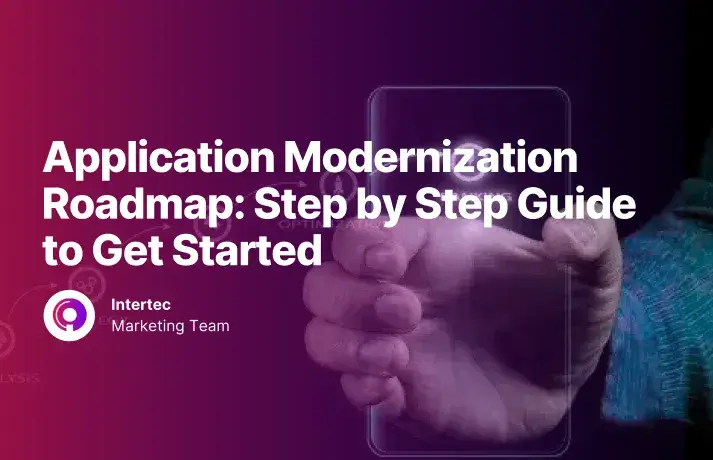Strategic Planning & Assessment
Do’s:
- Define clear, measurable goals: Set specific targets that connect directly to business goals and organization-wide outcomes. For example, aim to reduce page-load times by 50% or cut infrastructure costs by 30%.
- Conduct a comprehensive assessment: Evaluate existing systems and legacy applications to identify performance issues, security gaps, and integration barriers.
- Prioritize applications based on business value: Start with critical applications that most affect business operations or involve sensitive data.
- Create a phased modernization roadmap: Align your modernization strategy with business needs, ensuring the process addresses both current architecture and future-proofing objectives.
Don’ts:
- Don’t modernize without business alignment - modernization efforts must support the organization’s long-term business case.
- Don’t skip a portfolio assessment - ignoring dependencies between legacy systems leads to wasted effort and additional technical debt.
- Don’t underestimate legacy dependencies - modernizing legacy applications without understanding their data flow and operating systems can cause failure in critical applications.
Choosing the Right Modernization Approach
No single approach fits all. Each legacy system and current architecture requires careful evaluation. The classic 7Rs framework helps identify the best modernization approach - whether to rehost, replatform applications, refactor, or rebuild.
Do’s:
- Match the approach to application context: Select strategies based on complexity, business value, and current and future needs.
- Ensure buy-in from technical and business stakeholders to align the modernization journey with business agility goals.
Don’ts:
- Don’t assume one size fits all - each application modernization initiative must consider new technologies, compliance, and integration needs.
- Don’t ignore long-term value - avoiding deep refactoring might speed things up temporarily, but often leads to persistent technical debt.
- Don’t overlook the risks of vendor lock-in - maintain flexibility to leverage multiple cloud environments or hybrid cloud setups for high availability and load balancing.
Modernizing Architectures & Technologies
Modernization is about more than moving to the cloud - it’s about future-proofing your business through emerging technologies.
Do’s:
- Adopt cloud-native applications: Build loosely coupled services that can evolve independently and scale dynamically.
- Use microservices architectures and containerized applications for agility, enabling continuous integration and faster deployment.
- Leverage artificial intelligence and machine learning to enhance data analytics and predictive decision-making.
- Integrate serverless computing for flexible scaling and cost-effective resource usage.
Don’ts:
- Don’t migrate monolithic applications without careful planning - simply lifting an old system to a new platform without restructuring only moves performance issues to the cloud.
- Don’t over-engineer - microservices and containers add complexity; use them where business needs justify the new capabilities.
Data & Security Considerations
Data is at the heart of modernization processes, and security is the foundation.
Do’s:
- Treat data as a core asset: During modernization efforts, plan data migration carefully and ensure accuracy.
- Secure by design: Embed security and compliance from the start - especially when handling sensitive data across hybrid cloud or multi-cloud environments.
- Automate verification and auditing - use built-in cloud services for encryption, access control, and threat detection.
Don’ts:
- Don’t leave security as an afterthought - Security must be baked into every application modernization process stage. If you leave it until deployment, you risk costly fixes later. The stakes are high; the average cost of a data breach is now about $4.4 million.
- Don’t migrate data without validation - corrupted data can disrupt business operations.
- Don’t ignore identity and access management - fragmented authentication systems can weaken your security posture.
Ongoing Management & Improvement
Modernizing applications is not a one-time process - it’s an ongoing journey.
Do’s:
- Monitor continuously: Track key business metrics, user experiences, and system performance to detect bottlenecks early.
- Foster innovation: Watch for new tech that lifts what you build. Think AI features that drive things, serverless setups in the back end, or low-code platforms. The market size for low-code platforms is expected to climb to 101.68 billion dollars by 2030. That means a compound annual growth rate of 22.5 percent from 2024 through 2030.
- Encourage continuous improvement: Embed continuous integration and feedback loops into your development cycle.
Don’ts:
- Don’t stop after deployment - ongoing optimization keeps systems up to date and relevant to changing business demands.
- Don’t neglect cost control - regularly review your infrastructure and cloud services for efficiency.
- Don’t ignore user feedback - even modern applications can fail if they don’t enhance customer experiences.
Conclusion
Application modernization best practices require a balance between technology and business strategy. The most successful organizations treat modernization as a continuous process, using emerging technologies to achieve business agility, stronger security, and future-proof architectures.
By focusing on careful planning, comprehensive assessment, and ongoing improvement, companies can modernize legacy systems into scalable, intelligent, and secure modern applications. In doing so, they not only meet current and future needs but also drive innovation, reduce manual effort, and unlock business value that truly sets them apart.







